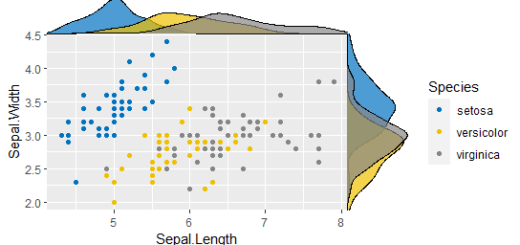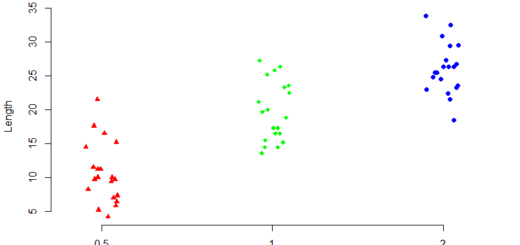Add Error Bars to Bar Plots in R Using ggplot2
Add Error Bars to Bar Plots in R Using ggplot2, Visualizing data effectively is crucial in any analytical endeavor, and one of the best ways to do this is by integrating error bars into bar plots.
Add Error Bars to Bar Plots in R Using ggplot2
This article will guide you through the process of adding error bars to your bar plots in R using the powerful ggplot2 package.
We will explore two main examples: one with summary statistics and another using raw data.
Getting Started with ggplot2
To create bar plots with error bars, you’ll first need to have the ggplot2 library installed and loaded into your R environment. If you haven’t done so yet, you can install it using the following command:
install.packages("ggplot2")Once installed, load the library:
library(ggplot2)Example 1: Adding Error Bars Using Summary Data
Step 1: Create a Data Frame
Let’s say you have a data frame containing summary statistics—mean and standard deviation—for different categories. Here’s how to create such a data frame in R:
# Create data frame
df <- data.frame(category = c('A', 'B', 'C', 'D', 'E'),
value = c(12, 17, 30, 22, 19),
sd = c(4, 5, 7, 4, 2))
# View data frame
print(df)Your data frame will look like this:
category value sd
1 A 12 4
2 B 17 5
3 C 30 7
4 D 22 4
5 E 19 2Step 2: Create a Bar Plot with Error Bars
Now, you can create a bar plot along with error bars that visualize your data:
# Create bar plot with error bars
ggplot(df) +
geom_bar(aes(x = category, y = value), stat = 'identity', fill = 'steelblue') +
geom_errorbar(aes(x = category, ymin = value - sd, ymax = value + sd), width = 0.4) +
labs(title = "Bar Plot with Error Bars", x = "Categories", y = "Values")Step 3: Customize Error Bar Appearance
You can further customize the appearance of your error bars by modifying parameters like width, size, and color:
# Create bar plot with custom error bars
ggplot(df) +
geom_bar(aes(x = category, y = value), stat = 'identity', fill = 'steelblue') +
geom_errorbar(aes(x = category, ymin = value - sd, ymax = value + sd),
width = 0.3, size = 2.3, color = 'red') +
labs(title = "Customized Bar Plot with Error Bars", x = "Categories", y = "Values")Example 2: Adding Error Bars Using Raw Data
For scenarios where you only have raw data, you can first summarize the data before creating bar plots.
Step 1: Create a Data Frame with Raw Data
Let’s generate a dataset for several categories with raw values:
# Make this example reproducible
set.seed(0)
# Create data frame
df <- data.frame(category = rep(c('A', 'B', 'C', 'D', 'E'), each = 10),
value = runif(50, 10, 20))
# View first six rows of data frame
head(df)Step 2: Summarize the Data
Use the dplyr package to summarize the mean and standard deviation for each category:
library(dplyr)
# Summarize mean and sd for each category
df_summary <- df %>%
group_by(category) %>%
summarize(mean = mean(value),
sd = sd(value))
# View summary data
print(df_summary)Your summary data will look like this:
# A tibble: 5 x 3
category mean sd
1 A 16.40 2.80
2 B 14.90 2.99
3 C 14.60 3.25
4 D 15.20 2.48
5 E 15.80 2.41Step 3: Create a Bar Plot with Error Bars
Now, create a bar plot with error bars using the summary data:
# Create bar plot with error bars
ggplot(df_summary) +
geom_bar(aes(x = category, y = mean), stat = 'identity', fill = 'steelblue') +
geom_errorbar(aes(x = category, ymin = mean - sd, ymax = mean + sd), width = 0.3, color = 'red') +
labs(title = "Bar Plot with Error Bars from Raw Data", x = "Categories", y = "Mean Values")Conclusion
Incorporating error bars into your bar plots in R not only enhances the interpretability of your data visualizations but also adds a layer of sophistication.
Whether you work with summary statistics or raw data, the ggplot2 package provides a flexible platform for effective data presentation. Don’t hesitate to customize your plots further to fit your presentation needs!
Start using these methods today to make your visualizations more informative and appealing!




